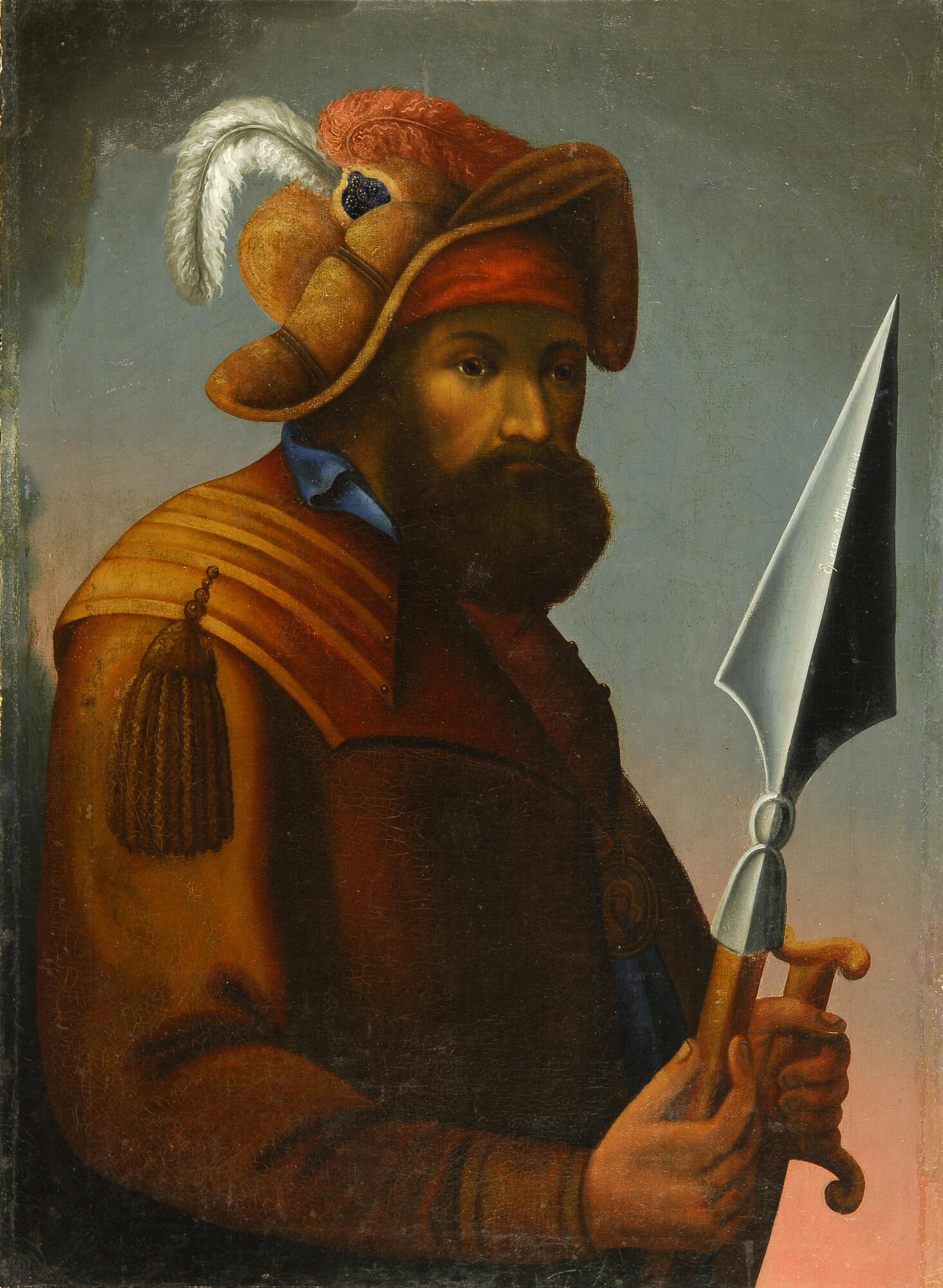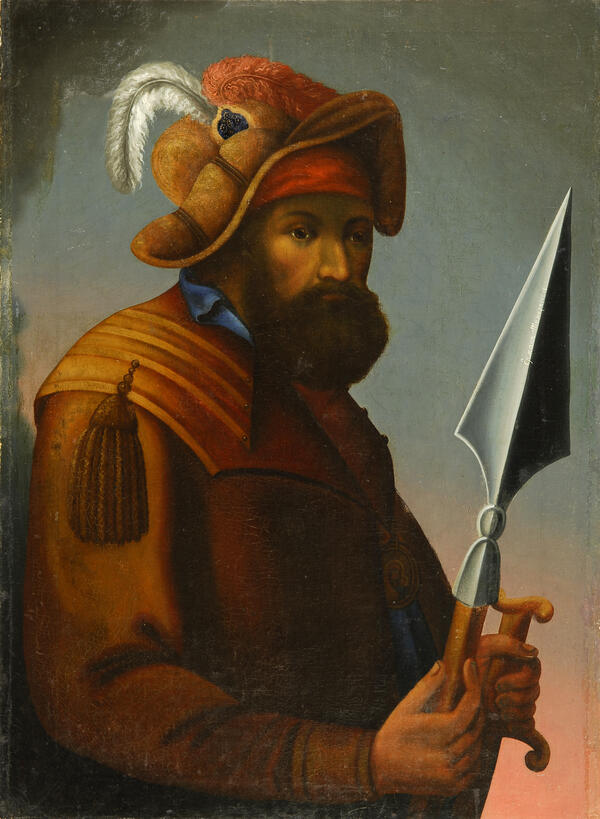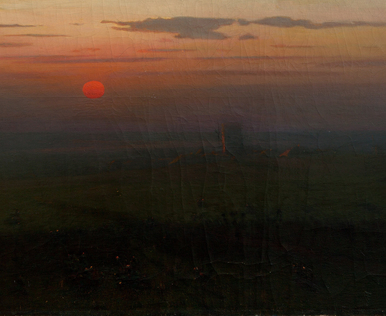The portrait of Yermak was created by an unknown Siberian artist in the early 19th century. This portrait was painted in parsuna style. The word, ‘parsuna, ” came from the Latin word, “persona, ” or personality. These paintings combined features of secular portraits and religious icons. The artists aimed to convey the appearance of a person and his social role, and at the same time used techniques from icon painting. Consequently portraits of people, though no longer painted with tempera on wood but with oil paint on canvas, still looked like icons.
In parsunas, artists did not use light and shadow modeling techniques. Therefore, the faces and spaces in the image looked flat — in painting this type of style is called ‘flat painting’. The heroes of such portraits were drawn conventionally and often slightly romanticized. Parsunas, as a rule, were signed with text describing the person being displayed.
On this painting the artist wrote Yermak Timofeyevich, Russian Cossack Ataman. He was the first conqueror of Siberia for Russia. Where Yermak came from is quite unknown. According to one version, he was born in the area of the Chusovaya River, and lived near the local rivers and even visited Asia. In a different version he originally came out of the Don Cossacks.
In 1582, a Cossack squad of more than five hundred people entered the service of the Ural merchants Stroganov. At that time, the Siberian Khan Kuchum regularly attacked the merchants, and they needed protection. The squad settled in the towns on Chusovaya. This is where the Cossacks stayed for two months and helped the Stroganovs defend themselves from robberies.
At some point, there heroes decided to go on the attack. A military squadron was formed for the conquest of Siberia at Oryol-Gorodok (Eagle Town), which was in the possession of the Stroganovs. The backbone of the army were made up of Volga Cossacks commanded by chieftains, such as Yermak Timofeyevich, Ivan Koltso, Matvey Mescherak, and others. Additionally, the Tatars, Germans and Lithuanians took part in the campaign. The whole army consisted of 840 men. They made the trip without knowledge of the Tsarist government, and the historians even called them ‘a small band of vagabonds’.
At first, everything went well: the forces of the Siberian Khan Kuchum were defeated. The Khan escaped, the army of Cossacks claimed the capital, and the local townsfolk greeted them bearing gifts. However, after a while Khan Kuchum attacked the chieftains, and the fight dragged on. On the night of August 16, 1585, Yermak alongside a small military squad died at the mouth of Vagay. Only one Cossack managed to escape, who delivered the sad news.



